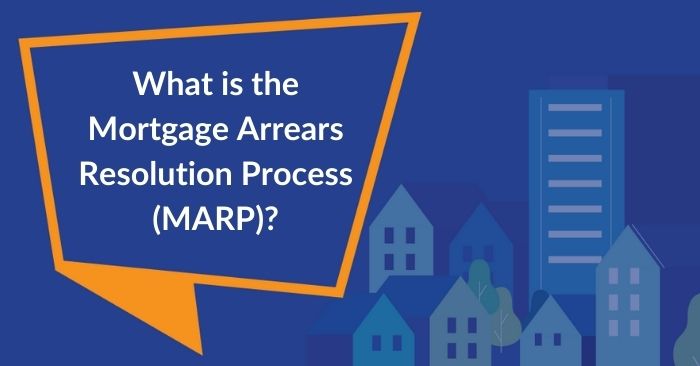What is the Mortgage Arrears Resolution Process (MARP) ?
Have you seen or heard MARP in conversations with your lender? Perhaps you have seen MARP mentioned in letters but don’t know what it means. Don’t worry. We are here to help break down the jargon and show you how the Mortgage Arrears Resolution Process could help you in your current situation.
What is mortgage arrears?
Let’s start with defining mortgage arrears. Being in mortgage arrears means you are behind on paying your mortgage. It results from missing some or all of your mortgage loan repayments to the lender. A lender can be one of the main high-street banks or a credit servicing firm, sometimes called “vulture funds”.
Mortgage arrears can happen for many reasons. It could happen because of illness, loss, a reduction in income, or some other reason outside your control. It’s important to know that there are supports available. Continue reading to learn more.
What is the Mortgage Arrears Resolution Process (MARP)?
The MARP is a framework that sets out rules for how lenders must deal with borrowers when they fall into mortgage arrears or are in pre-arrears. It forms a major part of the Code of Conduct on Mortgage Arrears (CCMA); a statutory code set out by the Central Bank of Ireland.
What are the steps in the MARP?
(1) Communication with borrowers: this determines how the lender will engage with the borrower to inform them of their arrears.
- Be clear: it is a requirement to have clear communication, so the borrower can understand what is happening.
- Excessiveness – communication from the lender must not be excessive.
- Inform: the lender must inform borrowers if they plan to sell their mortgage loan to a credit servicing firm.
- Be compliant: the new mortgage loan owner must comply with the MARP.
(2) Financial Information: to give a full and clear picture of a borrower’s financial situation, a Standard Financial Statement (SFS) must be completed. If a borrower is confused or overwhelmed by the SFS, they can complete it with help from an adviser from MABS. The SFS is covered in more detail later in this blog.
(3) Assessment: when the SFS has been filled in, it must be submitted to the lenders’ Arrears Support Unit (ASU). The ASU will review the SFS and consider the borrower’s personal and family circumstances when considering potential arrangements.
(4) Resolution: after assessing the SFS, the lender will either offer you an alternative repayment arrangement (ARA) or not. If the lender does not offer you an ARA, they must explain the reasons for doing so.
What protections does the MARP give borrowers?
MARP protects borrowers from being immediately evicted from their homes if they fall into mortgage arrears. Another protection is that MARP ensures the borrower receives eight months’ notice from the starting date of their arrears before legal proceedings can start. This time allows the borrower to work towards an arrangement that keeps them in their home, wherever possible.
Sometimes the lender will reject an arrangement the borrower proposes, but this does not mean the end. The appeals board will review the rejected proposal. The board consists of three senior personnel from the lender. The lender must acknowledge receipt of the appeal within five days and communicate a decision within 40 days.
What does a Standard Financial Statement (SFS) look like?
All SFSs must contain the same questions set out by the Central Bank. A standard sample document can be found however, the colours, font and design can differ on the SFS documents depending on the lender. The key thing to remember is that the questions and content remain the same. An adviser from MABS can help borrowers in mortgage arrears complete their SFS for free.
How to start the MARP process?
It’s important to remember that it’s never too late to address home mortgage arrears. Most importantly, we advise the borrower to contact their lender if they are in mortgage arrears as soon as possible. The worst thing to do is to ignore the situation. Taking the first step to getting help is difficult but worthwhile.
Below are the MARP guidelines for lenders/credit servicing firms and how borrowers can begin their MARP process.
If you are in mortgage arrears and fear you are at risk of losing your home, call the MABS dedicated Helpline on 0818 07 2000 or find your local office and make an appointment.
Disclaimer: This blog does not represent legal advice and is intended for guidance only. If you are concerned about your current or future personal financial situation, then please contact an adviser from MABS. Advisers are available by phone, email and in person in locations nationwide.
Note: We welcome references to and use of the content in this blog. However, please reference MABS and link said content if you choose to do so.





Facebook
twitter
Instagram